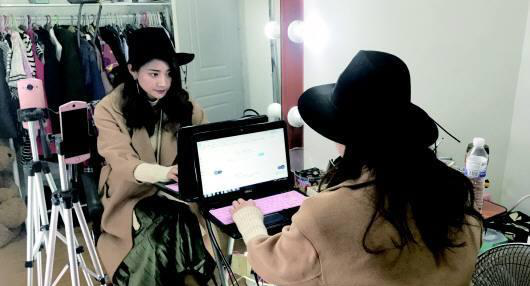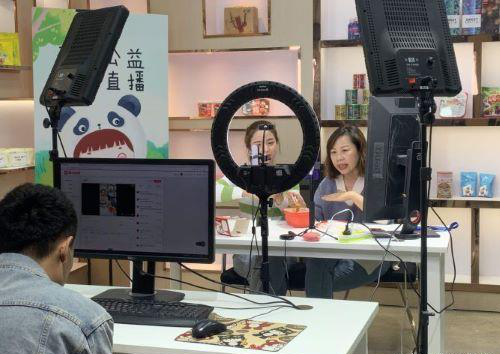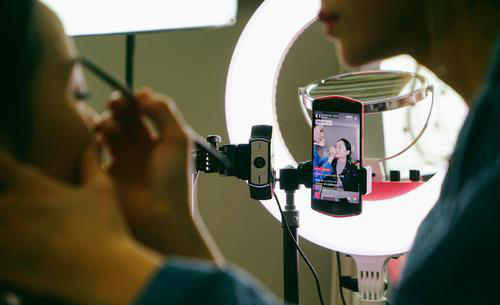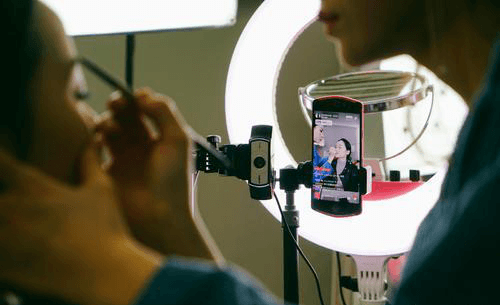Live streaming provides a brand-new “social” marketing mode for traditional e-commerce companies – the anchor will gather audiences with the same hobbies in the live broadcasting room. When the audience watches the content broadcast by the anchor on the e-commerce live broadcasting platform, they can directly purchase the product by clicking the link displayed on the live broadcasting room. At the same time, these audiences can also express their views and opinions on the products in the live broadcast room, or let the anchor recommend the products suitable for them according to their own needs. This mode of “live broadcast + e-commerce” not only improves the stickiness of consumers in the Internet, but also improves the conversion rate of e-commerce’s commodity sales, creating a greater profit opportunity for traditional e-commerce, allowing e-commerce platforms to absorb the traffic in the Internet, and maximizing the realization of these traffic.
At present, there are three modes of “live + e-commerce”: all three models have their own characteristics and play a different role in their respective fields. Domatters will take you to understand them.

The first is the direct embedded live broadcast function of e-commerce platform:
In fact, the embedded live broadcast function of e-commerce platform has been applied by many top enterprises in the e-commerce industry. For example, Taobao, Jingdong, etc., all of which are embedded with corresponding live broadcasting functions in their own platforms, equivalent to turning live broadcasting into “accessories” of e-commerce. In the mode of embedded live broadcast function of e-commerce platform, at the beginning, it mainly uses the traffic of e-commerce platform to drive the live broadcast traffic. After the live broadcast platform has sufficient fixed traffic, it uses the live broadcast traffic to feed the e-commerce. Most of the e-commerce adopting this mode prefer to promote some “mass consumer goods” with high cost performance and acceptable price by most consumers, such as netred and stars, so as to achieve the purpose of promotion in a short time. If the effect of live marketing is good enough, even some “affordable” goods can be sold out.
This kind of “live + e-commerce” mode, which can achieve “promotion effect” in a short time, can be accepted by most young people who like online shopping, and can make these young people subconsciously accept products and generate purchase ideas when watching the live broadcast. Therefore, it is the most favorite mode for most e-commerce platforms at present.

The second is the relationship between live broadcast platform and e-commerce platform through commodity link:
There are very few such cases at present. For example, some professional game live platforms may hang the purchase links of game currency and game point card in the live room, but after the corresponding live broadcast, the links will be taken immediately and will not be placed for a long time. There are also reasons why live platforms are reluctant to place e-commerce links for a long time. Although the mode of “live broadcast + e-commerce” can bring more benefits, most of the current professional live broadcast platforms still focus on attracting fans to reward the host. In other words, if there is an e-commerce link on the live platform, the product can be sold, which may affect the fans’ experience of live broadcasting and cause the platform’s traffic loss. Although in this mode, the initiative of marketing is in the hands of the live broadcast platform, but for the large live broadcast platform which has gathered a large number of live audience traffic, choosing this mode may cause the consequences that are not worth the loss, so few attempts are made.

The third is the content e-commerce platform focusing on live broadcast:
At present, the number is very small. However, this mode is the real “live + e-commerce” marketing mode. At present, the main content providers of live broadcast are jackfruit, little red lips and so on. Little red lip is a beauty live e-commerce platform for young girls in China. Wanghong is broadcasting live on the small red lips, sharing the knowledge of skin care and make-up, and providing the audience with optional related products. Young girls can see what they want on their little red lips, and they can buy it directly in the station. This way makes the flow realization channel more extensive and strengthens the executable content of live marketing.
This “live broadcast + e-commerce” mode makes live broadcast have obvious marketing color. When the audience watches the live content, they already have the psychological preparation to see the advertisement. Therefore, as long as the content conforms to the corresponding product promotion value, it will not make the audience have too much exclusion psychology. In addition, this mode also creates a platform of mutual benefit and symbiosis between live broadcast and e-commerce, so that live broadcast and e-commerce are in the same position. Therefore, the embedded live broadcast function of traditional e-commerce platform is totally incomparable with the live broadcast based e-commerce platform. The third mode of “live broadcast + e-commerce” is the main way for e-commerce to use live broadcast in the future, and it is also one of the development trends of e-commerce in the future. We provide enterprises with free live source code, build a live platform, and one-stop development services such as live delivery, friend circle, microblog and other one button sharing functions, to meet various business needs of enterprises in the market development.










